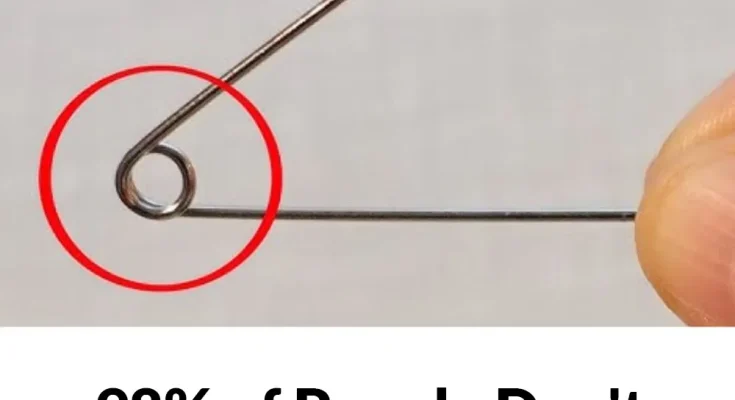If you’ve ever used a safety pin, you’ve probably noticed that small hole near the clasp and wondered—what’s it for? Believe it or not, that tiny detail serves a clever purpose that most people have completely overlooked.
Sewing has evolved dramatically over the centuries, from basic hand-stitching to high-speed sewing machines. Yet, some traditional techniques and tools—like the humble safety pin—still hold secrets that can make sewing easier, faster, and far more efficient.
A Forgotten Trick That’s Making a Comeback
While modern sewing relies on digital patterns and advanced tools, generations before us mastered smart, simple methods that worked beautifully. Now, some of those timeless tricks are returning—and they can transform how you sew.
One of the best examples? Beeswax.
Before sewing, run your thread gently across a small block of beeswax. This quick step helps strengthen the thread, reduce tangles, and create smooth, sturdy stitches. It’s a tiny effort that delivers big results—especially for hand-sewn projects.
5 Timeless Sewing Hacks Every Crafter Should Know
Here are a few classic sewing tips that still work wonders today:
1. Mark Fabric Using Dry Soap
Don’t have tailor’s chalk or a fabric pen? A piece of dry soap works perfectly. It leaves visible lines that easily wash away and won’t damage your material—a budget-friendly trick every sewer should know.
2. Reinforce Seams with Backstitching
To keep your seams from unraveling, go back over the last few stitches at the end of each line. This simple backstitching step strengthens your seams, making garments and crafts more durable.
3. Pin Diagonally for Better Stability
When securing fabric, insert your pins at an angle instead of straight across. It holds layers in place more firmly and prevents slipping—plus, it’s easier to remove as you sew.
4. Create Strong, Neat Knots Effortlessly
Wrap your thread several times around your needle before pulling it through. This forms a secure, compact knot that stays put even after multiple washes.
5. The Secret of the Tiny Hole in a Safety Pin
Here’s the big reveal: that small hole at the end of a safety pin isn’t just for decoration. It’s designed to hold a thread, string, or narrow cord—making it easier to pull elastic or ribbon through fabric casings (like waistbands or sleeves).
By attaching a string through the hole, you gain better control and prevent the pin from slipping inside the fabric. It’s a simple yet genius design feature that saves time and frustration.




